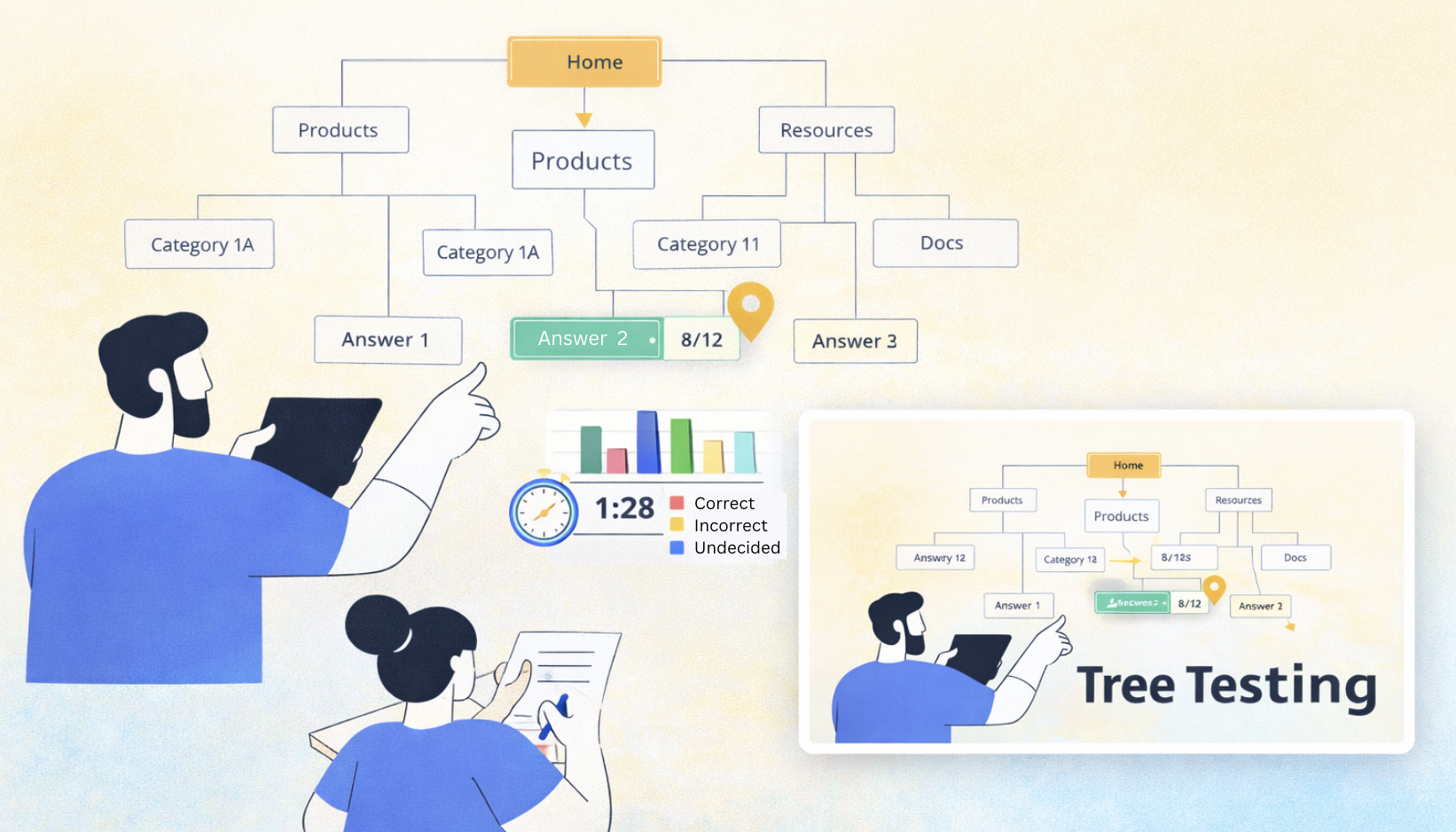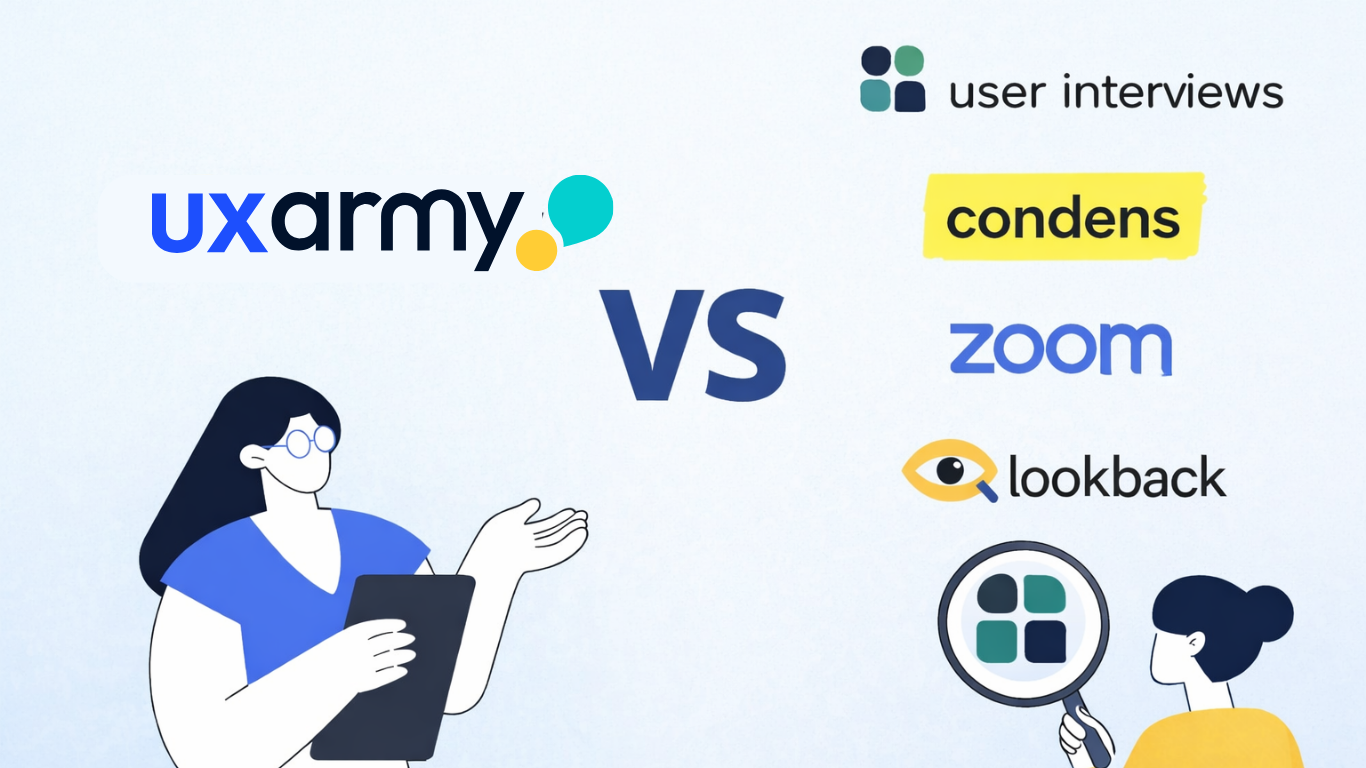Convincing stakeholders to invest in UX research platforms is a pivotal moment for UX leaders. Whether you’re in a bank, telco, or fast-growing tech startup, securing this investment determines whether your UX practice remains ad-hoc or evolves into a strategic asset. This guide equips you to win that support with insights rooted in trusted UX research platforms like UXArmy, while providing practical steps you can take today.
Understanding Stakeholder Objections
Stakeholder resistance often stems from three core concerns:
- Fiscal Caution: Can’t we just use spreadsheets and free tools?
- Pace of Delivery: Won’t testing slow us down?
- Uncertain Impact: How will this improve our outcomes?
Stakeholders question if user research is worth the investment, not its intrinsic value. Recognizing these worries helps us develop tailored rebuttals.
Aligning Research with Business Goals
For persuasion, translate UX research into the language of business:
- Traditional sectors care about: regulatory compliance, cost reduction, frictionless customer onboarding.
- Tech platforms and e-commerce target: conversion rates, retention, time-to-market.
Link your research to Key Performance Indicators (KPIs) – like checkout conversion, time-on-task, and support call volume – to frame it as a solution to stakeholder KPIs.
UXMatters highlights that measuring ROI of UX can convince senior leadership by connecting design to profit and efficiency.
Evidence-Based Arguments: Data & ROI
Quick-Win Pilots
Rather than abstract promises, show concrete outcomes. For example, running a single usability test on the sign-up flow using Maze can uncover a critical pain point within a day, leading to a 15% improvement in sign-up success. This immediately illustrates how a small investment in research directly saves development time and boosts conversion.
Quantitative Benchmarks
UX research platforms offer reliable comparative data: one Maze study reported that improving microcopy in checkout increased conversions by 45%, translating into a clear revenue uplift. When combined with average order values and traffic volumes, these metrics can be converted into actual dollar figures that resonate with finance stakeholders.
Stakeholder Interviews
By conducting informal discovery sessions with product managers or customer success leads, you gain insight into their KPIs – like reducing support ticket volume or onboarding drop-off. Tailoring your pilot around those needs (e.g., testing onboarding screens with Useberry) delivers results in their terms and garners immediate buy-in.
Addressing Organizational Types
Traditional Enterprises: Banking, Telcos
- Compliance & Security: Frame platform usage around existing enterprise compliance needs. Highlight features such as GDPR-ready consent flows, data encryption in transit and at rest, and single sign-on integrations, which align with internal audit and legal controls.
- Phased Adoption: Use internal apps or intranet redesigns (e.g. employee help portals) as low-risk test beds. When success is visible, stakeholders can justify expansion to customer-facing systems.
- Efficiency Gains: Emphasize that even internal UX improvements lower helpdesk volume and shorten staff onboarding time. Multiple enterprise reports show that improved internal UX can reduce support tickets by up to 30% and training costs by 20%.
Modern Tech & E-commerce
- Speed & Scale: Maze’s integration with Figma and unmoderated testing can fit comfortably in two-week sprints. Similarly, Useberry allows design and product teams to independently run tests without developer involvement – enabling continuous validation.
- Democratizing Research: Empowering non-UX team members to launch small usability tests creates shared ownership of user insights. Integrations with Slack or Notion allow open visibility and actionability across squads.
- Retention ROI: Studies from platforms like Lyssna show that testing navigation and copy – including preference testing – can increase feature adoption rates by 25%. This rapid feedback loop leads directly to iteration decisions that keep users engaged and reduce churn.
Tool Selection: Standout Platforms
Maze
- Integrates with Figma, supports quantitative metrics, rapid deployment.
- Maze’s own reports promote stakeholder engagement through visual dashboards
UXArmy
- Includes voice and screen recordings ideal for remote web and mobile usability, bridging quantitative measures with qualitative nuance. Additional tools include surveys, card sort and tree testing.
Lyssna
- Great for comparative testing and design preferences using Figma prototypes.
Designing Pilots That Win
A successful pilot follows these steps:
- Stakeholder Interview – Discover KPIs and pain points.
- Define Test Goals – Align tasks with measurable ROI and business metrics.
- Select Appropriate Tool – Use Maze or UXArmy for robust platforms.
- Execute Quickly – Launch within sprint timelines (< 2 weeks).
- Showcase Data and Conflict Clips – Combine metrics with poignant screen+voice videos.
- Recommend Actions – Present next steps clearly.
- Evaluate Stakeholder Reaction – Collect feedback; iterate.
Prioritizing Key Features
Stakeholders care about features that impact value:
- Screen & Voice Recording: UXArmy emphasizes this as a major differentiator, capturing deep emotional context.
- Quantitative Metrics: Task success, path analysis, completion rates.
- Integration: Smooth with Figma, Slack, or Notion – reduce friction.
- Compliance: Ensure GDPR/CCPA, data residency, and enterprise security.
Building Sustainable UX Culture
Internal Evangelism
Research roadshows across teams build visibility and rally support. Enlist internal champions to reinforce your efforts.


Embed Stakeholders in the Process
Invite them during planning and debrief sessions – All platform providers emphasize this as essential to long-term buy-in.
Consistent Reporting
Adopt a recurring structure: goals, methodology, highlights, quantitative data, suggested next steps. Dovetail’s automatic summarization tools make regular sharing efficient.
Overcoming Resistance & Risk Management
- Overloaded systems? Limit tools to 1–2 core platforms to prevent adoption fatigue.
- Perceived duplication? Clarify how UX insights complement BI and market analytics – not replace them.
- Bias concerns? Use panel-based recruitment and multiple methods to triangulate results.
- Security worries? Audit vendor SOC 2, ISO 27001, and follow enterprise guidelines.
Practical Roadmap for UX Leaders
| Phase | Activity | Outcome |
| 1. Discovery | Stakeholder interviews | Clarity on pain points & success metrics |
| 2. Pilot Launch | Run 1–2 tests using Maze or UXArmy | Gather data, clips, analysis |
| 3. Report Back | Present findings to stakeholders | Measure reaction & discuss next steps |
| 4. Expand | Roll out to additional teams/projects | Governance through templates, repositories |
| 5. Institutionalize | Launch research roadshow & empower non-UX team members | Sustainable culture & advocacy |
Securing investment in UX research platforms requires empathy for stakeholder concerns, alignment with business objectives, data-driven demonstrations, and strategic rollout. When done well, research transitions from a “nice-to-have” to a strategic imperative – enabling faster iteration, user-centric innovation, and reduced risk in both traditional and modern enterprises.
Initial success paves the way to deeper cultural change, where UX is interwoven into decision-making processes, and platforms empower teams across the organization.
This article is worthy of a read Measuring the ROI for UX in an Enterprise Organization – UXMatters
Experience the power of UXArmy
Join countless professionals in simplifying your user research process and delivering results that matter
Frequently asked questions
Why are stakeholders hesitant to invest in UX research platforms?
Stakeholders often question the cost, speed, and ROI of UX research tools. Common objections include budget constraints, belief that existing tools suffice, or fear that testing may slow down delivery. Addressing these concerns with data, small-scale pilots, and alignment to business goals can help overcome resistance.
What kind of results should I show to get stakeholder buy-in?
Quantifiable metrics like task success rate, reduced time-on-task, conversion improvements, and fewer support tickets are impactful. Pairing these with qualitative clips from user sessions – especially screen and voice recordings – can humanize the insights and strengthen your case.
How do I choose the right UX research platform for my team?
Look for tools that align with your goals, tech stack, and team structure. Platforms like Maze and Useberry excel at rapid unmoderated testing, while UXArmy offers rich screen + voice recordings. Consider integration with design tools (e.g., Figma), analytics, and security requirements when selecting.
How can I convince a traditional organization like a bank or telco?
Start with low-risk, internal-facing projects to demonstrate quick wins. Emphasize security features, compliance readiness (like GDPR or SOC2), and operational efficiency – such as shorter onboarding time or reduced internal support tickets.
Is it necessary to have a dedicated UX research team to use these platforms?
Not at all. Many platforms are designed to democratize research, allowing product managers, designers, and marketers to launch and analyze tests. This reduces reliance on centralized research teams and spreads user empathy across the organization.




